I printed the last colour on the Vernon park bench linocut recently. I added a light grey ink to the inset panels on the bench. Scroll down to view the different colour layers and the final print.


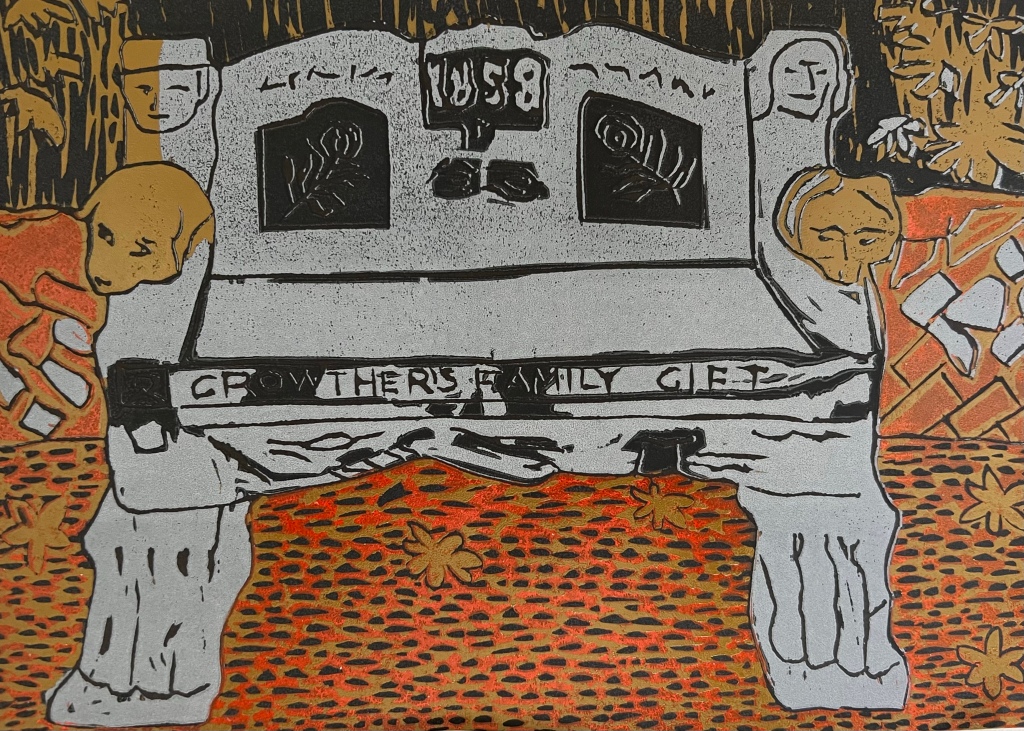

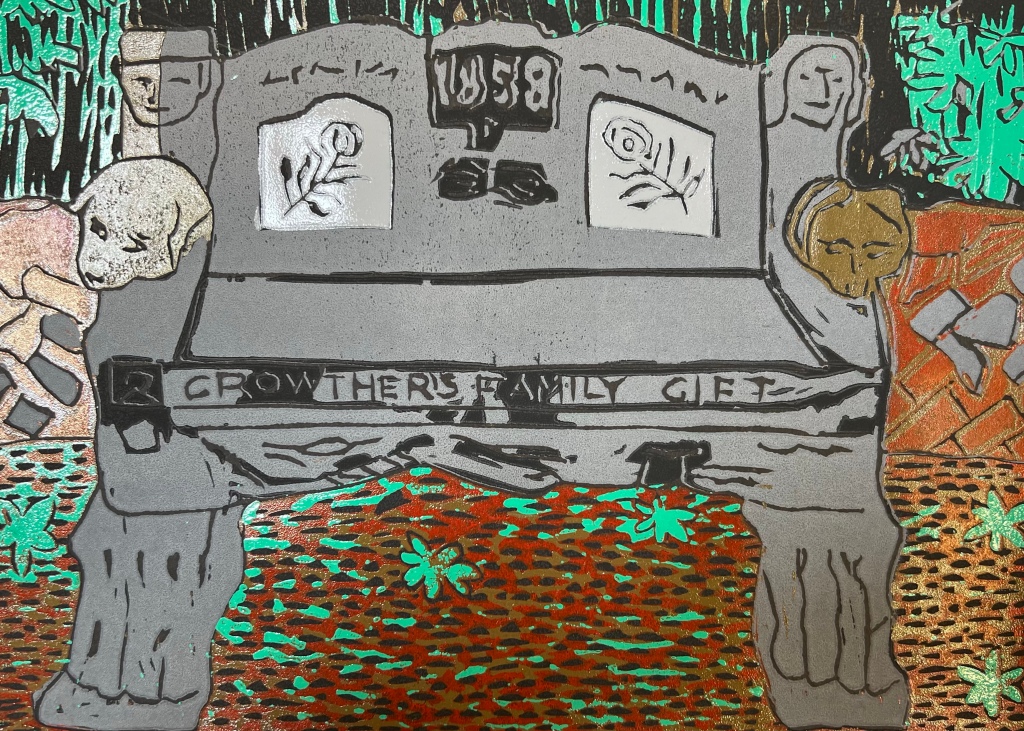
A blog about Stockport landmarks by artist/printmaker Neil Robinson which follows a printmaking project depicting the diverse architectural styles of my hometown both new and old.
I printed the last colour on the Vernon park bench linocut recently. I added a light grey ink to the inset panels on the bench. Scroll down to view the different colour layers and the final print.





I had some time off recently and decided to visit the Dürer exhibition in Manchester at the Whitworth Art Gallery. This is the first major exhibition of Dürer’s work for fifty years.


I was fascinated by the process of woodcut printing and the woodcut block on display, so much detailed work and observation of the subject matter. The exhibition covers the career of Dürer over his life and is located over two galleries linked by a long corridor which has a timeline of event in his lifetime.
My favourite woodcut print was of the large horse (circa 1505).
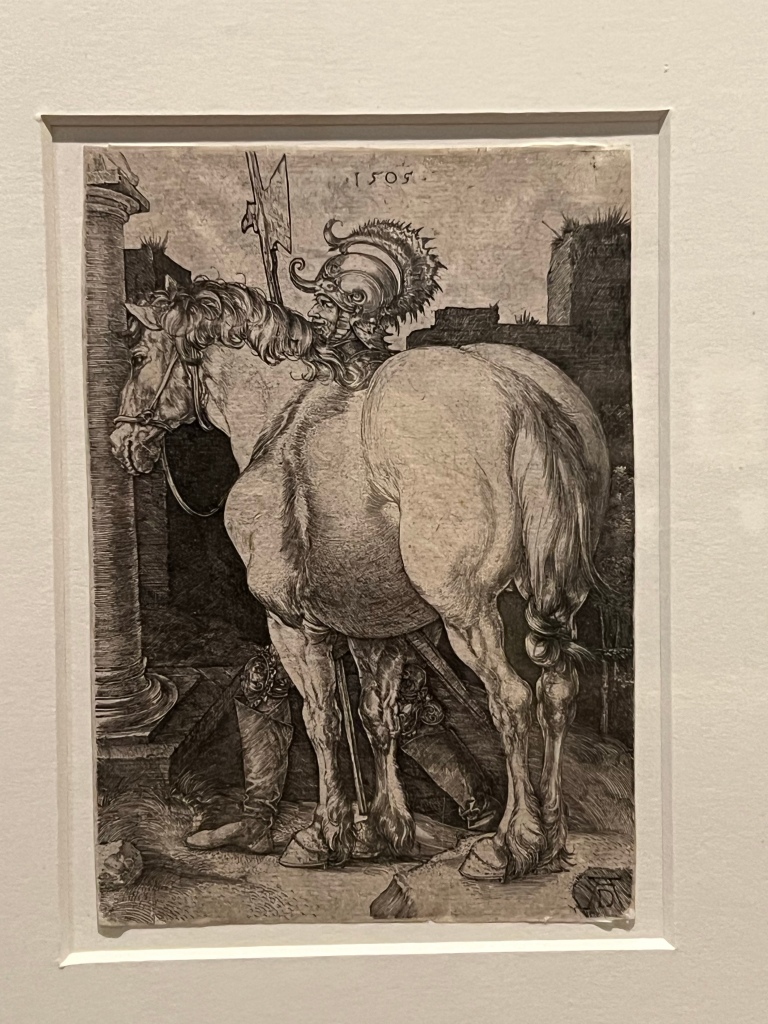
Later in the day, I had an appointment with Bury Art Museum to drop off and collect some of my prints at the art shop. One of my prints i submitted is the canal print (as seen below)

I attended The Real Public Art Show at Stockport War Memorial Art Gallery this afternoon.
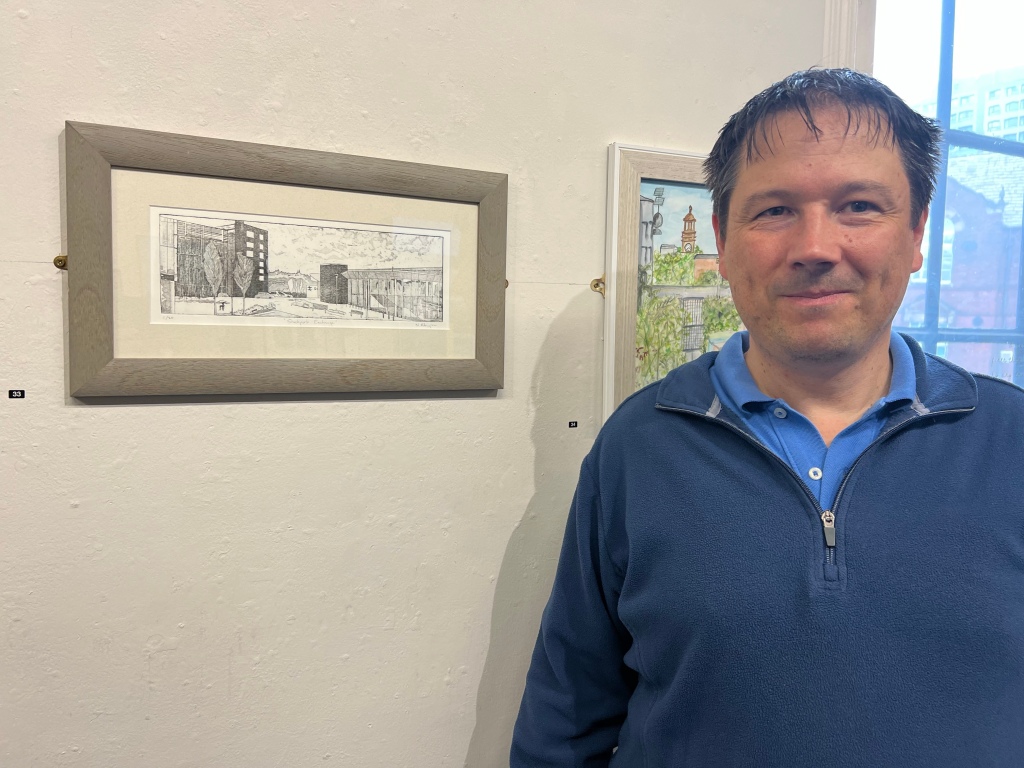
An excellent exhibition celebrating Stockport as part of the Stockport Town of Culture. I enter one of my prints depicting Stockport Exchange which was based on a sketch I did on location a few years ago.
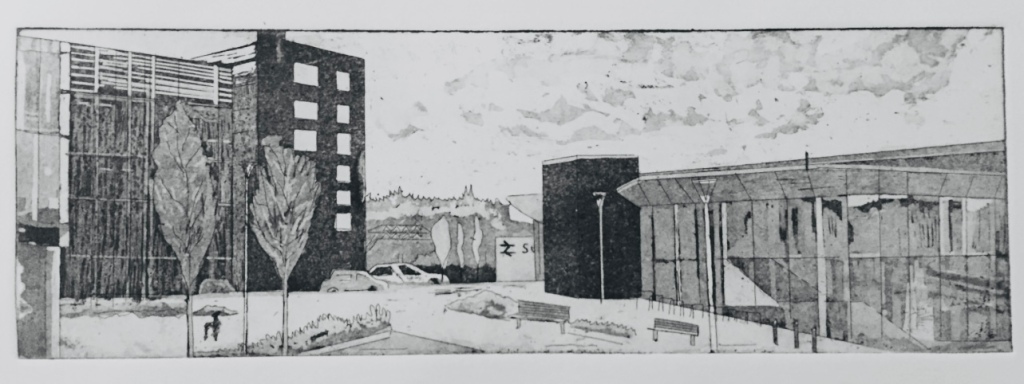
Today, I have been continuing to work on two plates; a Linocut based on a Vernon Park and an etching of The Blossoms pub.

I started work on the linocut this morning by removing small sections all over the linoleum sheet in preparation for a new layer colour. I decided to add a mix of burnt umber, white and yellow to create a sandy colour. I reckon I have at least 2 more colours left to print which I will be adding soon which will be light green ink for the foliage and highlights on the bench possibly white ink.
After lunch, I continued to work on another print this time an etching depicting The Blossoms pub. One issue from last time working on this print is that I discovered while printing a proof of the etching, there was a white spot on the print where the aquatint had for some reason been removed. As you can see in the photo below of the test print, this was very noticeable on the print, so I had to remedy this before I could continue printing.
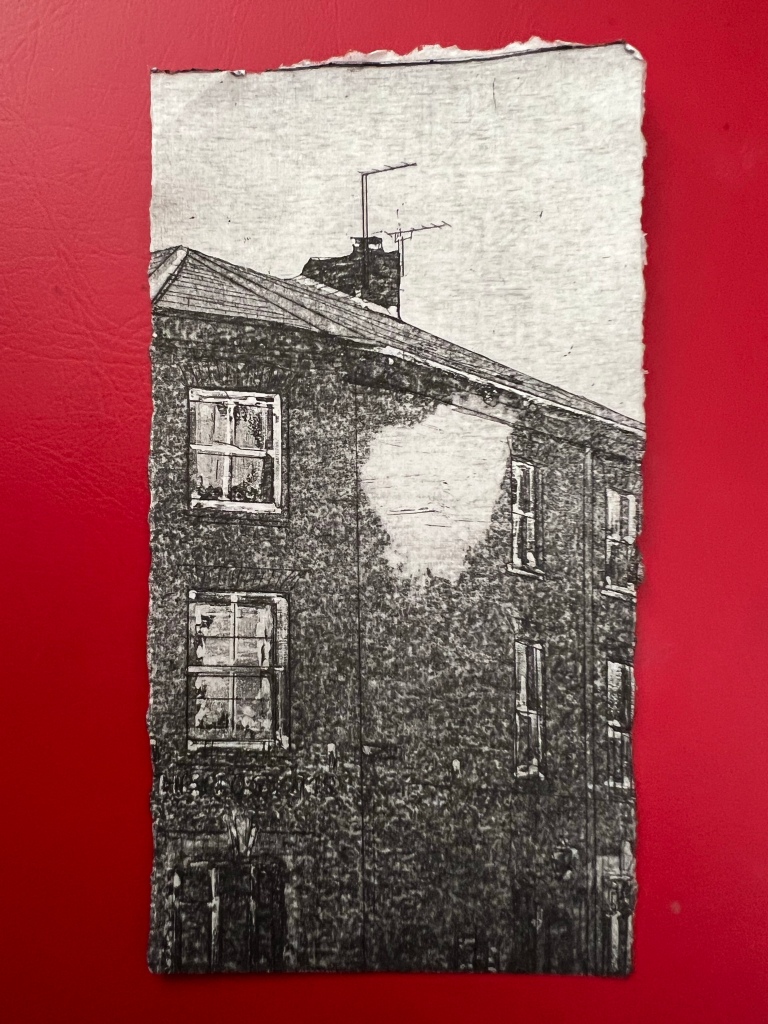
‘The Blossoms’ (Etching Aquatint)
I added aquatint resin again to the plate and then using stop out, I covered all the plate apart from the section where the blemish was located. The dark section on the print is where I left the plate exposed to the strong acid for 5 minutes. I then printed another proof and the result is shown in the photo below.

I then worked on burnishing the plate to lighten areas where required. In my next blog post I will show the finished print.
Earlier this month, I hosted a meetup event of Staircase House museum which is situated in the marketplace. Staircase House dates back to the 15th Century and houses artefacts right up to World War II. Each room houses a different century and you get the experience of stepping back in time. It’s a gem of a museum and certainly worth a repeat visit. While on the tour of the house, we were shown hidden beams and section reveals showing how the building was constructed.


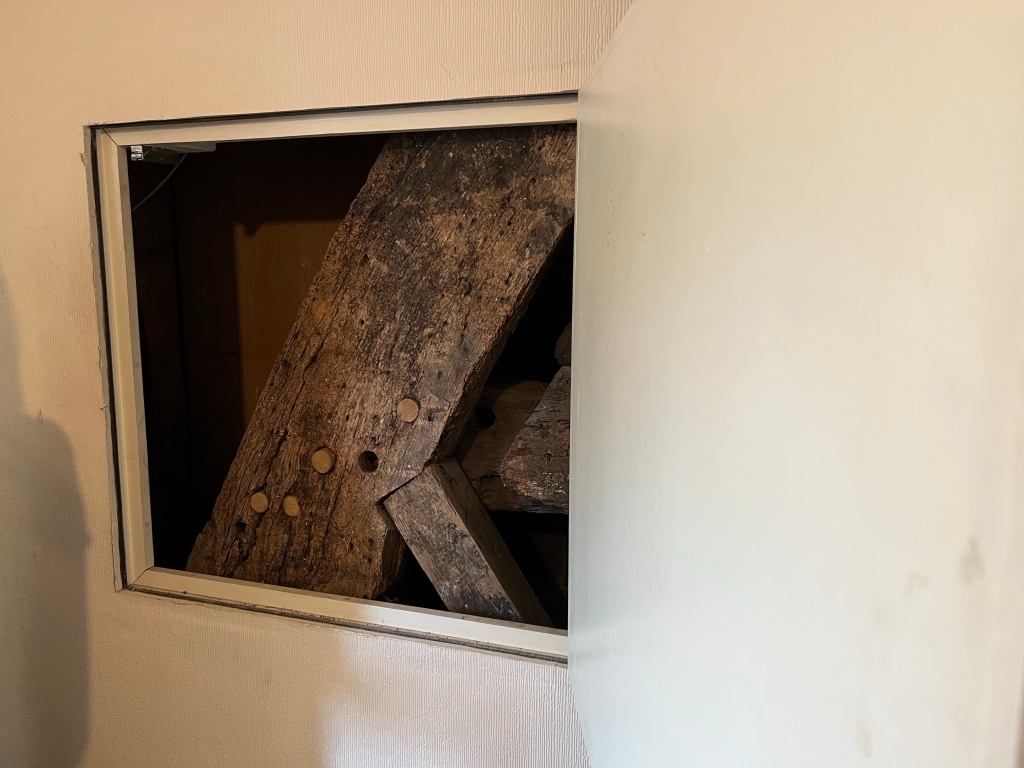





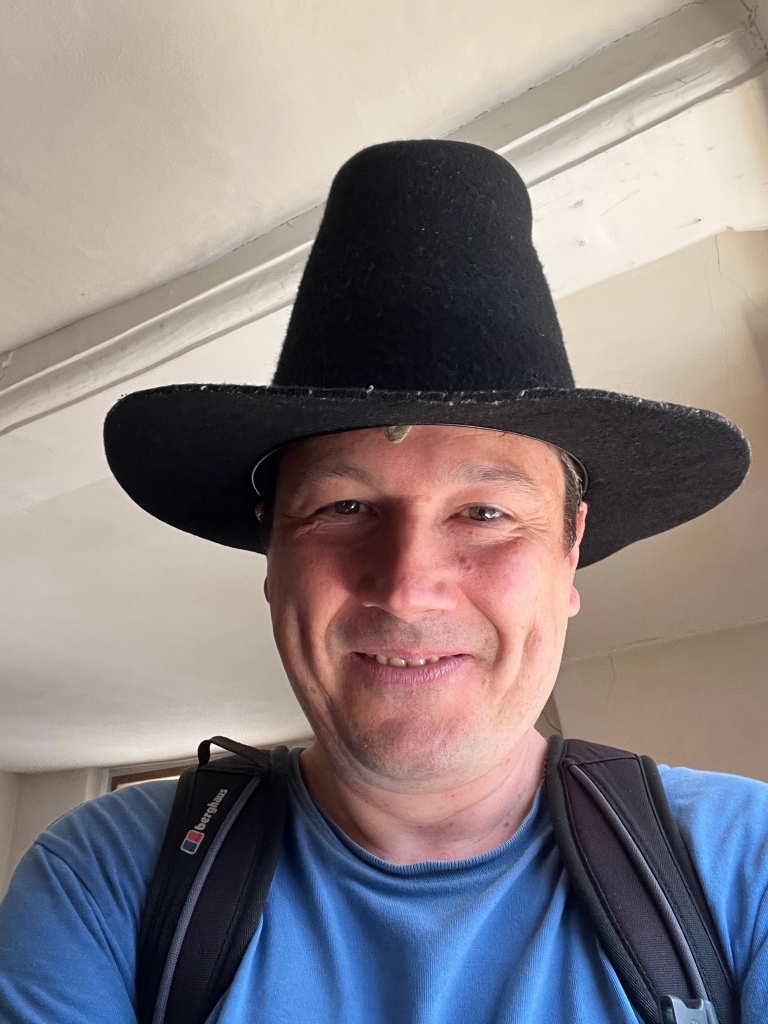
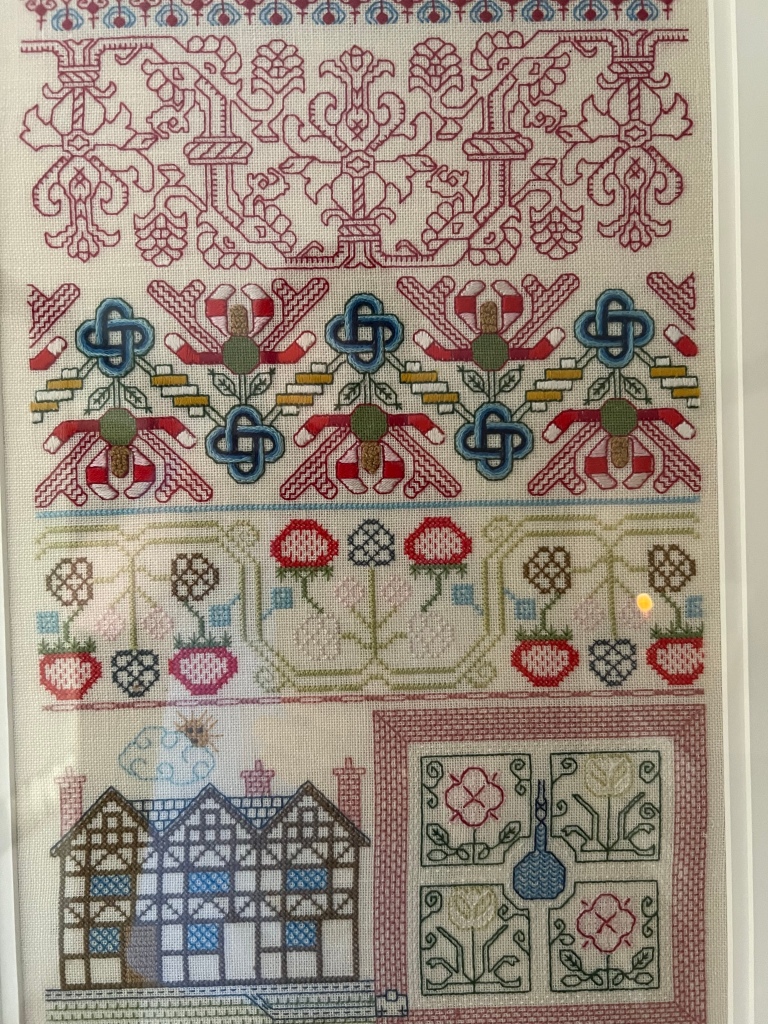
I am continuing to work on the Vernon Park linocut, which I have been slowly building up layers of colour these past few months. For each colour added, I then remove parts of the linoleum which I no longer need in preparation for the next colour layer. I tend to remove the linoleum at home to save time when I attend the workshop. So far I have printed 3 colours; Light grey, dark grey and a brick red colour on thin black cartridge paper. I have about 8 good prints so far. My next colour will probably be dark Green for the foliage in the background and on the path below the bench.

At the same time as printing the Vernon Park linocut, I continued working on The Blossoms etching. I managed to print off a proof print at the workshop. There seems to be a blemish on the print which I will need to fix probably by re-aquatinting the area affected. The print itself looks good so far, and hope to complete this print next month on my next visit to the studio.

I recently started work on a new etching on the theme of pubs in Stockport as part of my printmaking project. The new print depicting The Blossoms pub which incidentally is opposite the old pool hall building which I mentioned in my last blog post.

I might use this print for the upcoming 20:20 print exchange or I might do a brand new linocut instead.
On Saturday, I was due to take part in a Japanese woodcut 1-day workshop down in Derby at Green door studios. The workshop has been rescheduled for later this year due to illness. I hope to do a blog post in late October. I have never done any woodcut prints before so the wait will be worth it.
I am also continuing to work on my Vernon Park Linocut depicting a carved stone bench which I printed the second colour last week. Today I carved away a third layer which will be a light brick colour. I will show the results in my next blog post.
In mid May, I visited the capital London and spent a couple of hours in the British Museum. The museum is free and there are rotating exhibitions in the main forecourt building which you have to book for. One of the free exhibitions was the Japan’s festival float on the ground floor in Room 3 gallery as you enter the museum on the right hand side of the entrance. Apart from the beautifully crafted wooden model boat which was donated back on 1908 for the Summer Olympics, there were some amazing woodcut prints on display. I would recommend this place as a day out if you are visiting London as a tourist, lots to see.

I visited Printfest on a day trip yesterday afternoon. The weather was good as I drove up the M6 towards the Lake District. Printfest is an annual print festival held in the quaint market town of Ulverston at the Coronation Hall celebrating contemporary handmade prints.

I chatted to a number of printmakers while I visited the festival including printmaker and friend Pete Marsh who was participating in the festival.

I also had a chat with the owners of a new print studio just opened in the town called Printshare Lakes which runs printmaking workshops based at premises on Queen street in the town. Printshare runs workshops such as in paper lithography, mono print, collagraph, drypoint and linocut.
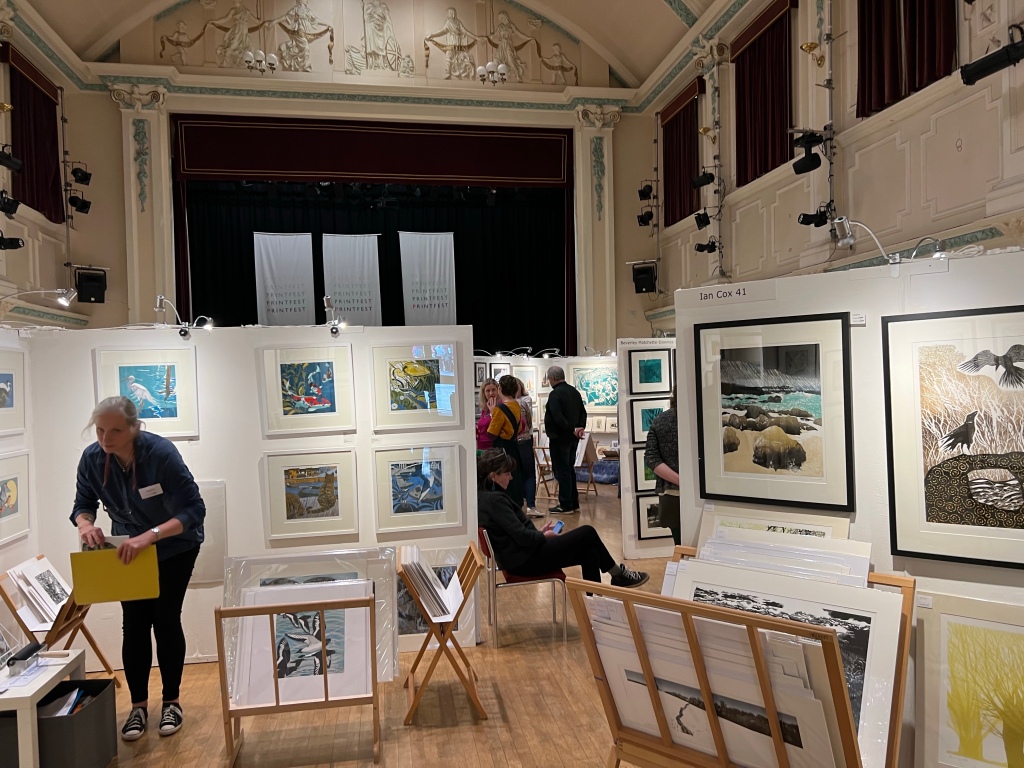

After visiting the festival, I headed back along the A590 stopping off with my parents for a pub meal at the Hare & Hounds in Levens village.
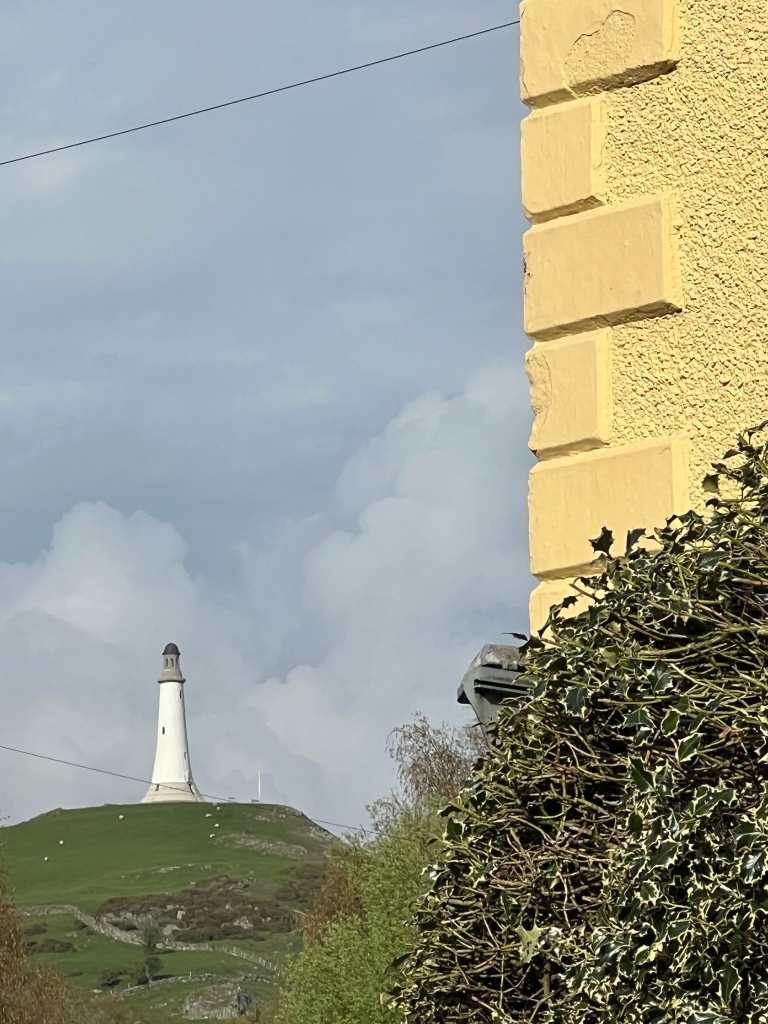
I’ve been working on a small series of gelli plate/matt medium prints depicting the abandoned pool hall that was once a cinema in its heyday. There’s a stone sign above the entrance which reads ‘The Wellington’.
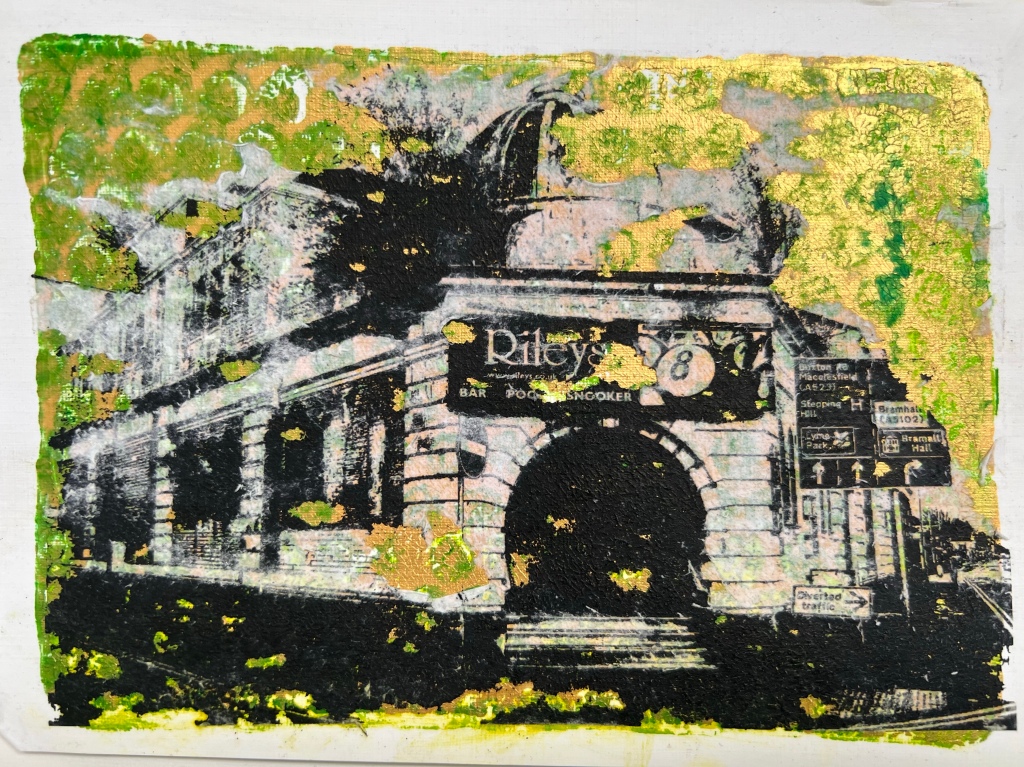
I am naming the series of print’s ‘Abandoned Recreation’.
On one of my recent photo walks, I photographed an oval shaped boarded up window which I have used as a framing device for my some of my prints.

I use acrylic paints in my Gelli printmaking and for these set of prints I have experimented with textures such as bubble wrap and stencils. On top of the gelli prints, I have added using Matt Medium to add a high contrast black and white reverse laser print. I reverse the image if there is text in the image so the text appears the right way around when the laser print is glued face down to the gelli print.
The results have been amazing and unique as each print is slightly different as not all the transfer sticks to the paper once the excess paper is removed through the process of soaking the acrylic print in a bath of water and after 5 minutes soaking removing the paper from the print by rubbing off the paper gently with your fingers.
Finally, once the prints are throughly dried out, you cure and seal the prints by applying 2 coats of acrylic varnish.
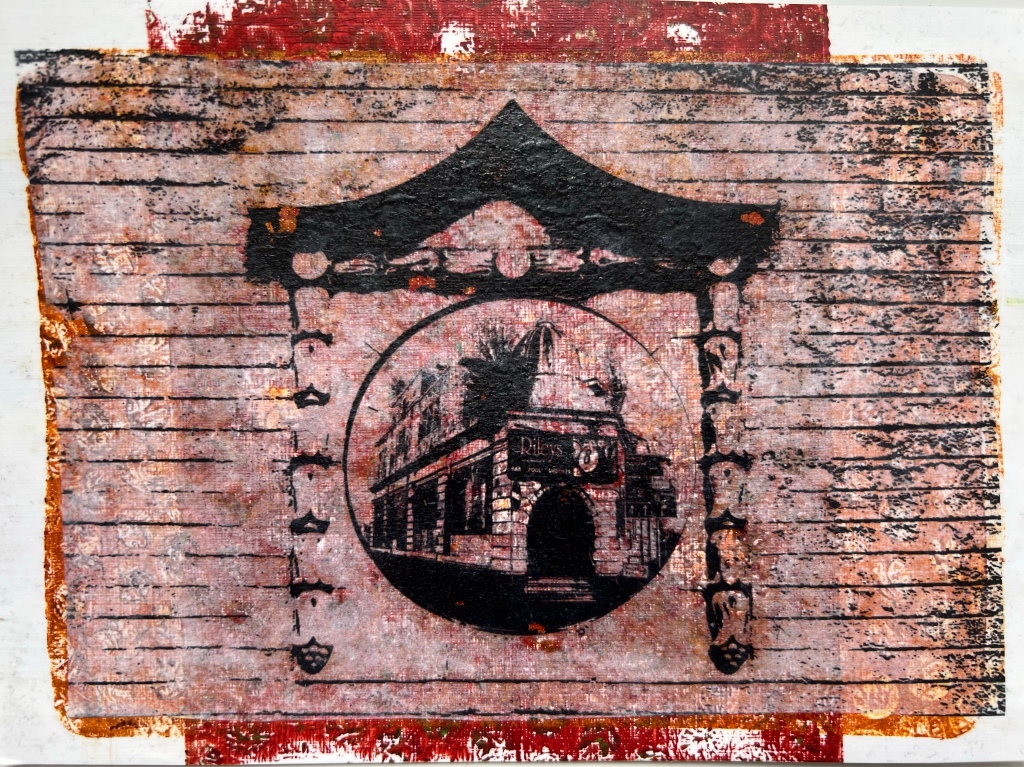


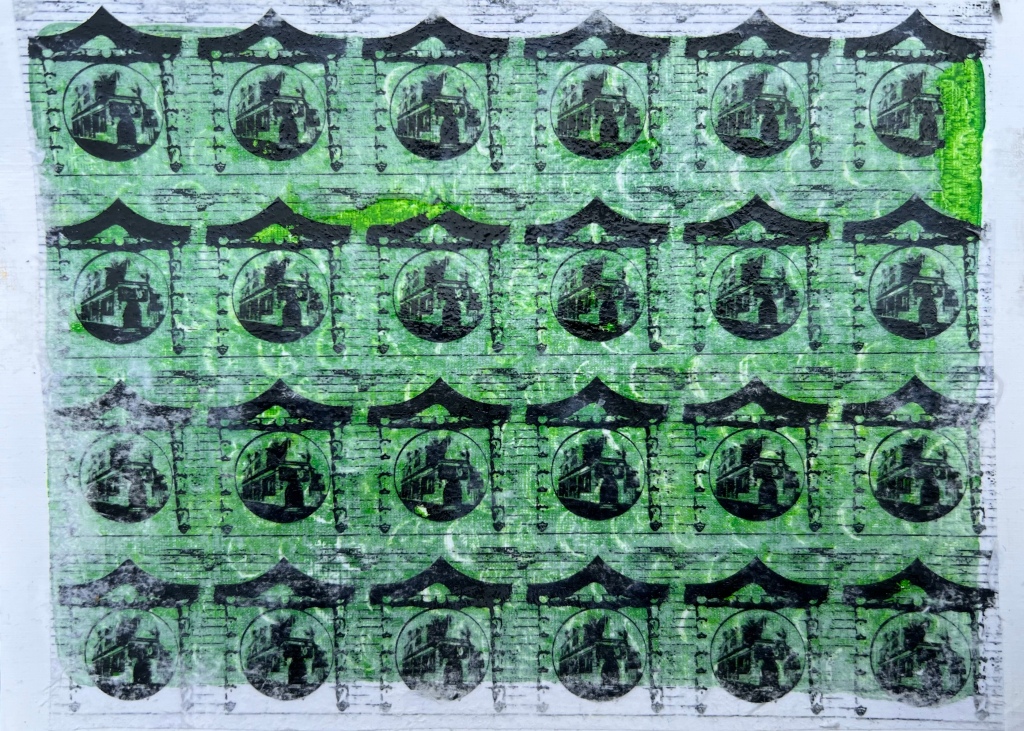
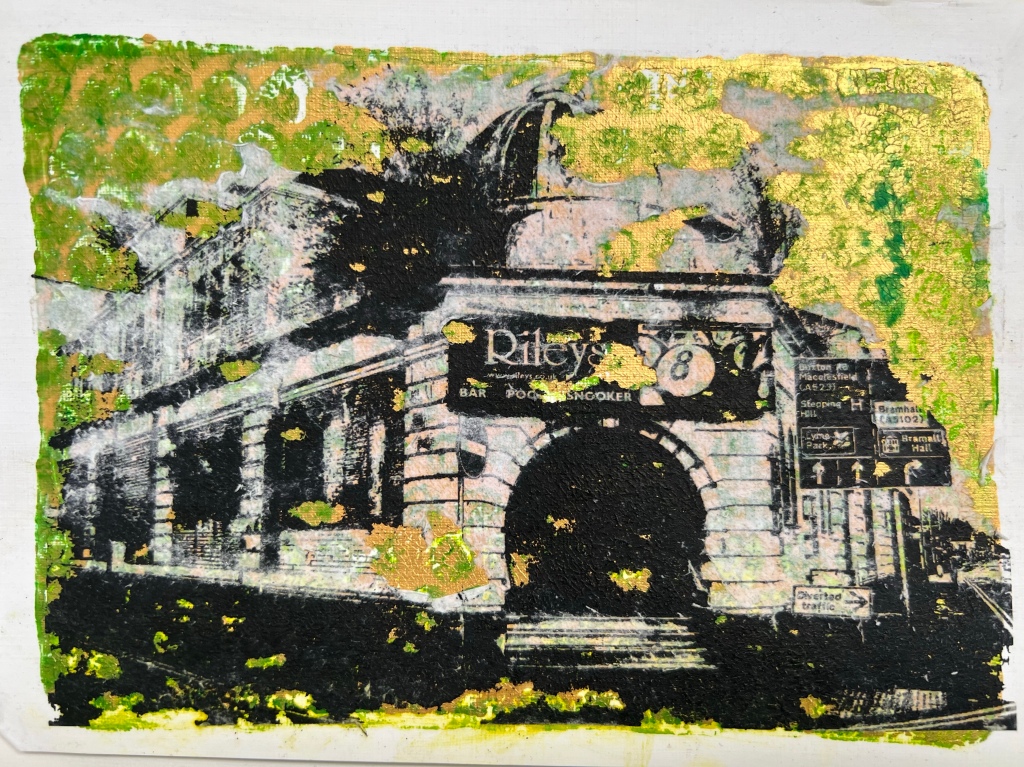

Here is the latest print I have been working on recently which is a reduction linocut depicting a quirky stone bench located in the rose garden of Vernon park. More prints to follow soon…

I am a member of Stockport Art Guild and I design and maintain the website for the group. I have recently setup a members online art gallery on the website.
You can see my new online gallery here which includes prints and also painting’s
You must be logged in to post a comment.